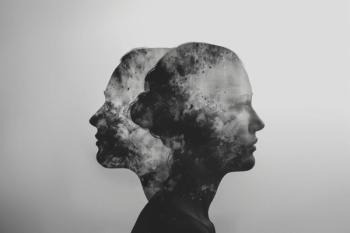Psychopathy is characterized by diagnostic features such as superficial charm, high intelligence, poor judgment and failure to learn from experience, pathological egocentricity and incapacity for love, lack of remorse or shame, impulsivity, grandiose sense of self-worth, pathological lying, manipulative behavior, poor self-control, promiscuous sexual behavior, juvenile delinquency, and criminal versatility, among others.1,2 As a consequence of these criteria, the image of the psychopath is that of a cold, heartless, inhuman being. But do all psychopaths show a complete lack of normal emotional capacities and empathy?
Like healthy people, many psychopaths love their parents, spouse, children, and pets in their own way, but they have difficulty in loving and trusting the rest of the world. Furthermore, psychopaths suffer emotionally as a consequence of separation, divorce, death of a beloved person, or dissatisfaction with their own deviant behavior.3
Case Vignette
These diary fragments are from a former patient of mine who passed away several years ago.
“I look normal, but I am very different. I am from another world. It is hard for me to understand the emotional world and emotional driven motivations of other people, and they don’t understand me. Someone else said that I vibrate on a different frequency than everyone else. This does not mean that nobody likes me; many do. But, it is the love human can experience for some predators such as tigers. Some people are unable to handle my impenetrable presence.”
“I am living in a parallel world, which has only a very thin and fallow connection to the outside world. I am watching how life is taking place, and I observe every single thing. It is like I am behind an endless and inescapable glass wall that allows me to see and be seen by others. It is as if I am superficially acknowledged by others, “the living,” while I am never really take part in their lives. I exist. Sure. But I am not quite with them, although there are very rare exceptions.”
“Even the way I explain my ideas to others is alien. It’s like I am trying to translate my ideas into a language that others will be able to understand. I need to tune in mentally in a very precise way otherwise the real meaning of the message is lost. The effort I am making to communicate is apparent, like instructing very complicated details of a mission to an astronaut on Jupiter by radio transmission.”
“I am forced to cope with all that social and sentimental madness, nonsense, and crap around me. I feel like someone who has remained deprived from influences and images from the civilized world is dropped in a ‘Disney World.’ The social games that are played by those ordinary people are experienced by me with growing amazement. Since I discovered more details and dynamics that are involved in these games it becomes even more mysterious for me what happens between them. I discovered that most normal people feign feelings and intentions and I see them laugh along spuriously when others in the group laugh and they remain stuck in several social-emotional rituals.”
“My empathy and emotions were frozen in my youth as a result of all sorts of aversive experiences: tensions between my parent and lack of safety at home, a lack of social contacts and associated social-emotional exercises and feedback. Episodically, I suffered from social seclusion and loneliness, my incapacity to fit in and the awareness that the distance between me and others, which was unbridgeable became even worse. I realized that I was and would remain a stranger no matter what my attempts would be to socialize. It was sometimes simply unbearable to keep on feeling these dark emotions that were evoked by this constant stream of negative experiences.
And at some point, perhaps as a consequence of being overcharged, my emotional fuse broke down and it turned to be cold inside. I remember that I was 8 or 9 when I became suddenly aware of the fact that I was forever changed. It was a sunny day and as I walked to school, a boy from my class crossed the street and made attempted to start a friendly conversation. I was immediately emotional blocked and unable to respond to him and the only thing I wanted was that he went away. He soon realized that I was unreachable and ran away. He never spoke to me again and he was somehow afraid of me. From that moment on I was emotional frozen.
Growing older, I use compensation techniques in order to fill up the gap that is caused by my lack of emotional, moral capacities, and other socially undesirable traits. Because I am always aware that in a world that is alien to me it is necessary for me to adapt myself to it at least at a minimum. Only in this way can I avoid major problems all the time and I can hide my real nature.
As a consequence, I must organize my life and the world around me in a very efficient manner. I must be constantly aware what the moral mores are of the majority of the people around in general and in special settings. This is difficult to explore with my prosthetic moral compass. And there is also the awareness of what is expected from me—what I should feel and the sentiments I should show in various circumstance. This is very energy consuming, indeed.”
Sources of sadness
Psychopaths can suffer emotional pain for a variety of reasons. As with anyone else, psychopaths have a deep wish to be loved and cared for. This desire remains frequently unfulfilled, however, because it is obviously not easy for another person to get close to someone with such repellent personality characteristics. Psychopaths are at least periodically aware of the effects of their behavior on others and can be genuinely saddened by their inability to control it. The lives of most psychopaths are devoid of a stable social network or warm, close bonds.
The life histories of psychopaths are often characterized by a chaotic family life, lack of parental attention and guidance, parental substance abuse and antisocial behavior, poor relationships, divorce, and adverse socioeconomic circumstances.4,5 These individuals may feel that they are prisoners of their own etiological determination and believe that they had, in comparison with normal people, fewer opportunities or advantages in life.
Despite their outward arrogance, psychopaths feel inferior to others and know they are stigmatized by their own behavior. Some psychopaths are superficially adapted to their environment and are even popular, but they feel they must carefully hide their true nature because it will not be acceptable to others. This leaves psychopaths with a difficult choice: adapt and participate in an empty, unreal life, or do not adapt and live a lonely life isolated from the social community. They see the love and friendship others share and feel dejected knowing they will never be part of it.
Psychopaths are known for needing excessive stimulation, but most foolhardy adventures only end in disillusionment because of conflicts with others and unrealistic expectations. Furthermore, many psychopaths are disheartened by their inability to control their sensation-seeking and are repeatedly confronted with their weaknesses. Although they may attempt to change, low fear response and associated inability to learn from experiences lead to repeated negative, frustrating, and depressing confrontations, including trouble with the justice system.
As psychopaths age, they are not able to continue their energy-consuming lifestyle and become burned-out and depressed while they look back on their restless life full of interpersonal discontentment. Their health deteriorates as the effects of their recklessness accumulate.
Violent psychopaths
• Ultimately, they reach a point of no return, where they feel they have cut through the last thin connection with the normal world
Risk factors
• Hidden suffering, loneliness, and lack of self-esteem are risk factors for violent, criminal behavior in psychopaths
Emotional pain and violence
Social isolation, loneliness, and associated emotional pain in psychopaths may precede violent criminal acts.6 They believe that the whole world is against them and eventually become convinced that they deserve special privileges or the right to satisfy their desires. As psychopathic serial killers Jeffrey Dahmer and Dennis Nilsen expressed, violent psychopaths ultimately reach a point of no return, where they feel they have cut through the last thin connection with the normal world. Subsequently, their sadness and suffering increase, and their crimes become more and more bizarre.7
Dahmer and Nilsen have stated that they killed simply for company.6 Both men had no friends and their only social contacts were occasional encounters in homosexual bars. Nilsen watched television and talked for hours with the dead bodies of his victims; Dahmer consumed parts of his victims’ bodies in order to become one with them: he believed that in this way his victims lived further in his body.7
For the rest of us, it is unimaginable that these men were so lonely—yet they describe their loneliness and social failures as unbearably painful. Each created his own sadistic universe to avenge his experiences of rejection, abuse, humiliation, neglect, and emotional suffering.
Dahmer and Nilsen claimed that they did not enjoy the killing act itself. Dahmer tried to make zombies of his victims by injecting acid into their brains after he had numbed them with sleeping pills. He wanted complete control over his victims, but when that failed, he killed them. Nilsen felt much more comfortable with dead bodies than with living people—the dead could not leave him. He wrote poems and spoke tender words to the dead bodies, using them as long as possible for company. In other violent psychopaths, a relationship has been found between the intensity of sadness and loneliness and the degree of violence, recklessness, and impulsivity.6,7
Self-destruction
Violent psychopaths are at high risk for targeting their aggression toward themselves as much as toward others. A considerable number of psychopaths die a violent death a relatively short time after discharge from forensic psychiatric treatment as a result of their own behavior (for instance, as a consequence of risky driving or involvement in dangerous situations).8 Psychopaths may feel that all life is worthless, including their own.3,6,7
Conclusions
The significance of suffering in the development and diagnosis of psychopathy is underexposed in current diagnosic systems and theories. It is extremely important to recognize hidden suffering, loneliness, and lack of self-esteem as risk factors for deviant, and even violent, criminal behavior in psychopaths. Studying the statements of violent criminal psychopaths sheds light on their striking and specific vulnerability and emotional pain. More experimental psychopharmacotherapy, neurofeedback, and combined psychotherapy research is needed to prevent and treat psychopathic behavior.
The current picture of the psychopath is incomplete because emotional suffering and loneliness are ignored. When these aspects are considered, our conception of the psychopath goes beyond the heartless and becomes more human.
Dr Martens is Chair, W. Kahn Institute of Theoretical Psychiatry and Neuroscience; he is also Psychiatry Advisor of the European Commission (Leonardo da Vinci) and a member of the Royal College of Psychiatrists, Utrecht, The Netherlands. He reports no conflicts of interest concerning the subject matter of this article.
References
1. Cleckley HM. Mask of Sanity: An Attempt to Clarify Some Issues About the So-Called Psychopathic Personality, 6th ed. St Louis: CV Mosby Co; 1982.
2. Hare RD, Harpur TJ, Hakstian AR, et al. The revised psychopathy checklist: descriptive statistics, reliability, and factor structure. Psychol Assess. 1990;2:338-341.
3. Martens WHJ. Clashing Worlds: Diaries of a Psychopath. Smashwords edition, September 8, 2019.
4. Martens WHJ. Antisocial and psychopathic personality disorders: causes, course and remission: a review article. Int J Offender Ther Comp Criminol. 2000;44:406-430.
5. Martens WHJ. A new multidimensional model of antisocial personality disorder. Am J Forensic Psychiatry. 2005;25:59-73.
6. Martens WHJ, Palermo GB. Loneliness and associated violent antisocial behavior: analysis of the case reports of Jeffrey Dahmer and Dennis Nilsen. Int J Offender Ther Comp Criminol. 2005;49:298-307.
7. Martens WHJ. Sadism linked to loneliness: psychodynamic dimensions of the sadistic serial killer Jeffrey Dahmer. Psychoanal Rev. 2011;98:493-514.
8. Black DW, Baumgard CH, Bell SE, Kao C. Death rates in 71 men with antisocial personality disorder: a comparison with general population mortality. Psychosomatics. 1996;37:131-136.


















